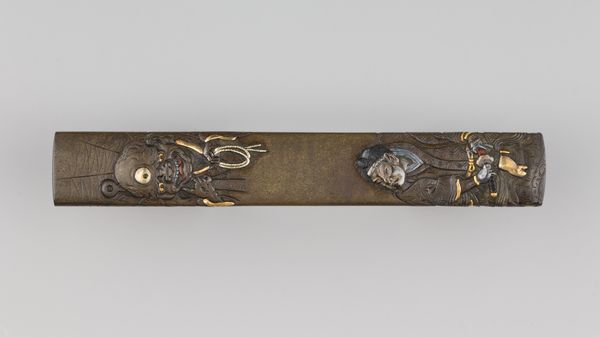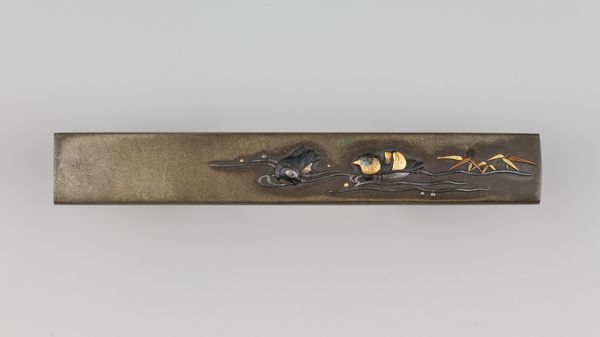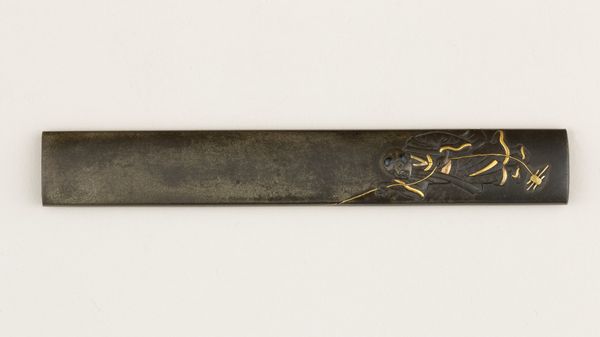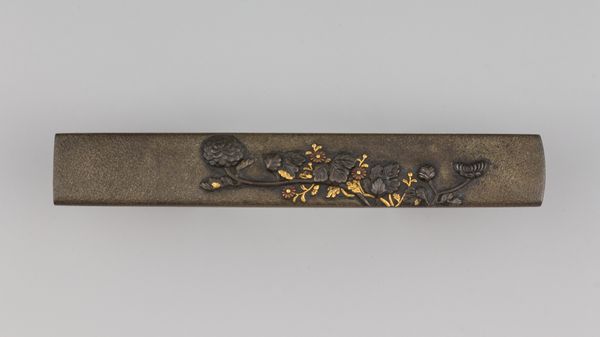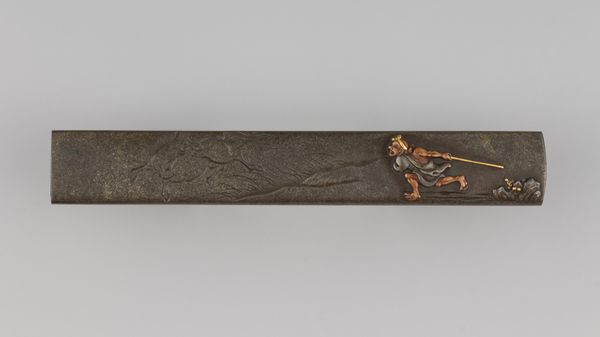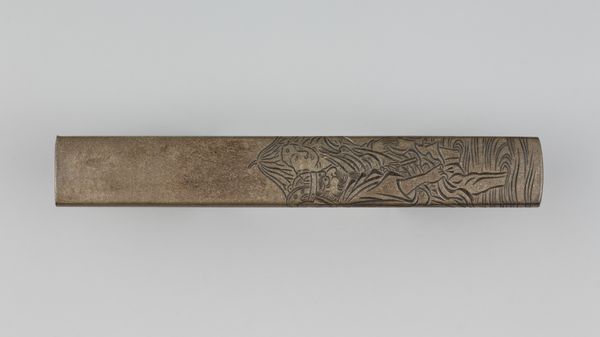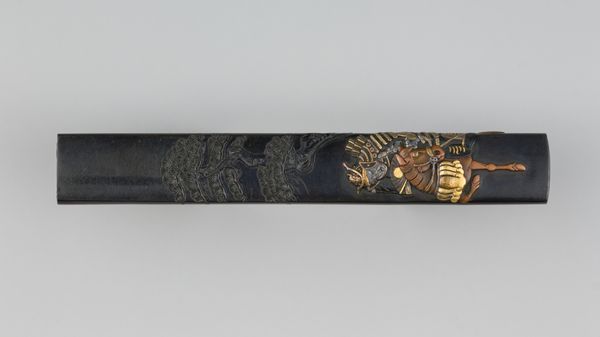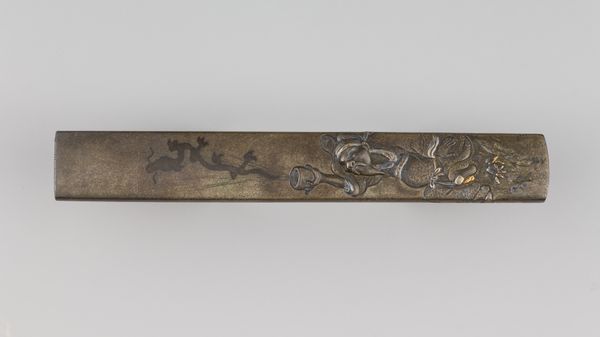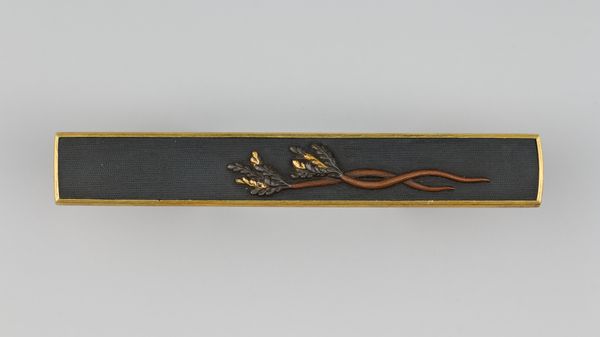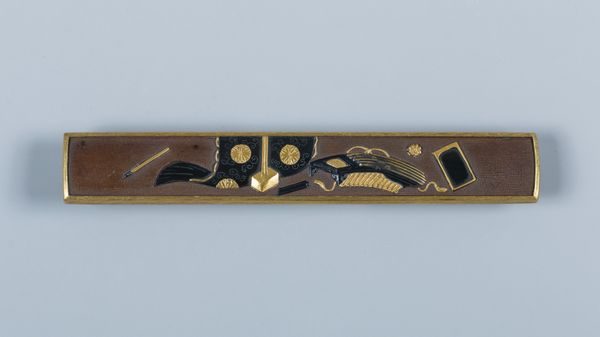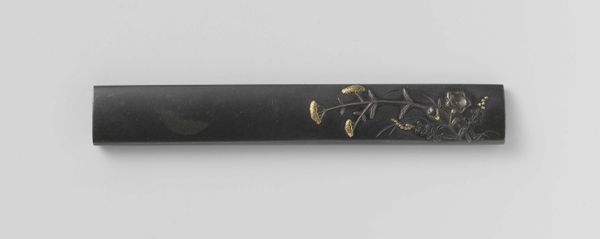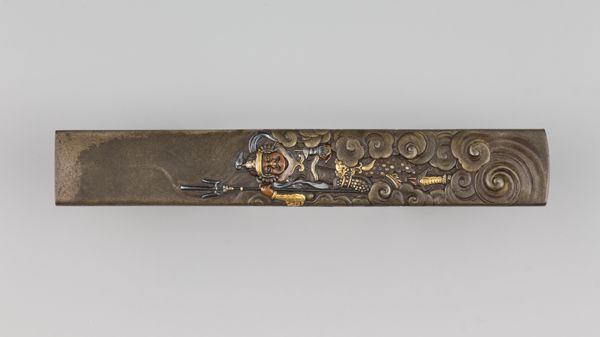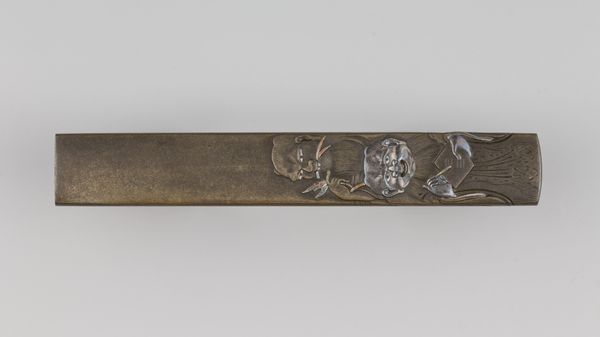
carving, metal, sculpture
#
carving
#
metal
#
sculpture
#
asian-art
#
japan
#
curved arc
#
sculpture
#
armor
#
decorative-art
#
sword
#
miniature
Dimensions: L. 3 13/16 in. (9.7 cm); W. 9/16 in. (1.4 cm); thickness 1/4 in. (0.6 cm); Wt. 1.2 oz. (34 g)
Copyright: Public Domain
Curator: Let's turn our attention to this exquisite 'Knife Handle (Kozuka)', created by Iwama Masayoshi in 1828. It's currently held at the Metropolitan Museum of Art. Editor: Right away, it gives off a quiet, almost melancholic feeling. It's so small and detailed—like a tiny world captured in metal. The bug, the dark colors… It feels autumnal, almost like the last breath of summer. Curator: Indeed. The kozuka, serving as a decorative handle for a small knife fitted into a samurai sword's scabbard, offers a canvas for intricate carvings and metalwork. What stands out here is the intentionality in its composition; the objects arranged with a clear symbolic and aesthetic consideration. Note how the craftsman utilized carving in metal to present us with what may well be interpreted as fallen twigs or pine needles scattered beneath a tree after a windy day, and notice too that single winged insect with clearly identifiable anatomical elements. Editor: You can see the way they used the light and dark metals to suggest depth—almost a painterly effect on metal! And the gold highlights, just a few strategically placed touches to bring life and richness to the composition. Did these insects or the scenery carry meaning, or impart cultural meaning at the time? Curator: Well, many motifs in Japanese decorative arts held symbolic significance, often related to longevity, good fortune, or aspects of nature revered within Shinto or Buddhist beliefs. The cicada itself, often associated with late summer, represents a fleeting life, and could easily stand as an allegory of transformation or transition, which makes sense, thematically speaking, if the purpose of carrying a small blade is defense, but, perhaps even more broadly, awareness of life's brevity. Editor: Knowing that bit of history, I find myself pondering on mortality in particular. The details are so delicate, especially in such a utilitarian item like a knife handle. The dark patina against the gilded detail – a metaphor for the richness found even in dark times? Curator: Precisely. The success of the kozuka lies not only in the superb carving skills, but also in its capacity to weave artistic and philosophical dimensions. This duality embodies a distinct aesthetic sensibility. Editor: It truly invites you to pause and meditate. A world reduced in scope that feels more expansive when observed up close. Curator: A telling quality of a well executed design—and further reason why objects of applied art reward the patient eye.
Comments
No comments
Be the first to comment and join the conversation on the ultimate creative platform.
